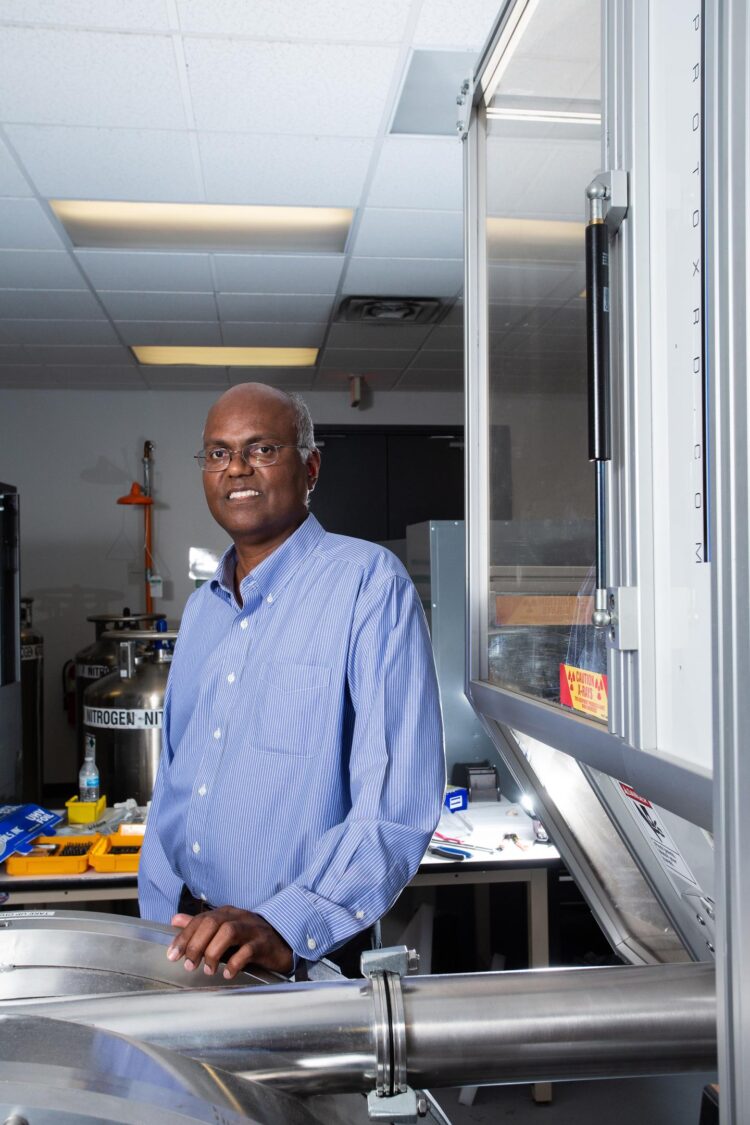UH project will develop superconducting magnets for fusion systems

Credit: University of Houston
Despite growing scientific and commercial interest in fusion as an on-demand energy source – producing emissions-free energy through the fusion of hydrogen atoms – significant obstacles remain. A researcher from the University of Houston has joined an effort by the U.S. Department of Energy to jumpstart the technology.
Venkat Selvamanickam, M.D. Anderson Chair Professor of Mechanical Engineering, will lead a $1.5 million project to develop high temperature superconducting magnets made from low-cost raw materials and capable of handling high currents in a magnetic field greater than 20 Tesla, a unit used to measure the strength of magnetic fields. (The earth’s magnetic field, by comparison, is about 0.0001 Tesla.)
The work is part of a $29 million program through DOE’s Advanced Research Projects Agency-Energy, intended to close fusion-specific technological gaps to accelerate deployment of a commercially viable fusion system.
The sun is the best-known example of fusion, producing energy through the fusion of hydrogen atoms. Duplicating that on earth, however, is complicated. For one thing, it requires a way to contain the resulting plasma, which can reach 1 million degrees Centigrade.
Superconducting magnets can contain the plasma, Selvamanickam said, but no system has been designed to implement the technology on a large scale at affordable cost.
That’s where he comes in. Selvamanickam is well-known for his work to advance technologies using high temperature superconducting tapes, including their use in wind turbines, industrial motors, power cables and other applications.
Fusion is a new challenge. “Without these superconductors, fusion is not possible,” he said. “It is an enabling technology. If it works, there is going to be huge demand for the superconducting tapes if we can lower the cost.”
His goal is to reduce the cost of the high temperature superconductors by a factor of 30.
Smaller fusion systems have the potential to lower the cost, but Selvamanickam said that will require more powerful superconducting magnets in order to contain the plasma and increase the power density of the energy produced at smaller scale.
“Our project is to demonstrate that it works,” he said. “We know these magnets can operate in a higher magnetic field, but they are also extremely expensive.”
Making superconductor magnets that can withstand the powerful magnetic fields needed to implement fusion, at a dramatically lower cost, would make commercialization economically viable, he said.
That could play an important role in global efforts to reduce climate-damaging emissions such as carbon and methane. Selvamanickam said the use of fusion energy would also avoid a complication hindering the larger-scale deployment of wind or solar energy: It doesn’t require an energy storage system, as it can be produced on-demand.
“Fusion is a wonderful technology,” he said. “But it’s really demanding in terms of the materials that are required. They have to operate in an extreme environment.”
###
Media Contact
Jeannie Kever
[email protected]
Original Source
https:/





